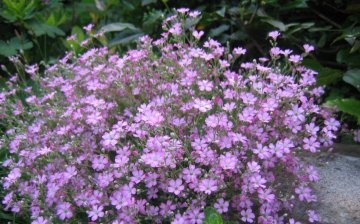Gypsophila pink - features of cultivation
Probably, each of the women has ever been given a bouquet of flowers, which included small white or pink flowers that add volume to the whole bouquet. But few women know that these placers of white small flowers are called gypsophila.
Usually, the stalk of gypsophila is almost non-leafy, it is bare, its length can vary from 10 to 50 cm. In nature, this plant can also grow in the form of shrubs over a meter in height.
Most often, white flowers are found on the plant, but there is also a pink gypsophila.
It is recommended to plant gypsophila in soil that is well permeable to water. Already in the summer months, when buds begin to set on the plants, take care to provide the plants with support, to tie them up. After the flowering is over, you need to prune the gypsophila. This is a necessary measure that aims to stimulate the formation of new shoots on plants.
In the fall, if the weather forecast promises a sharp cooling, young plants of gypsophila pink need to mulch the soil. Tree bark or dry leaves are best suited for this.
Planting gypsophila is recommended in well-lit areas of the garden, but slight shading is possible. This plant is very fond of substrates containing lime. The soil should be well-drained, nutritious, but light at the same time.
Gypsophila pink, like white, is most often used for cutting. Not often, but still there are mono-bouquets from this plant, but mainly gypsophila is used in combination with other types of flowers. These flowers are not bad preserved even in a dried form, therefore they can be used in the preparation of ikebans.



